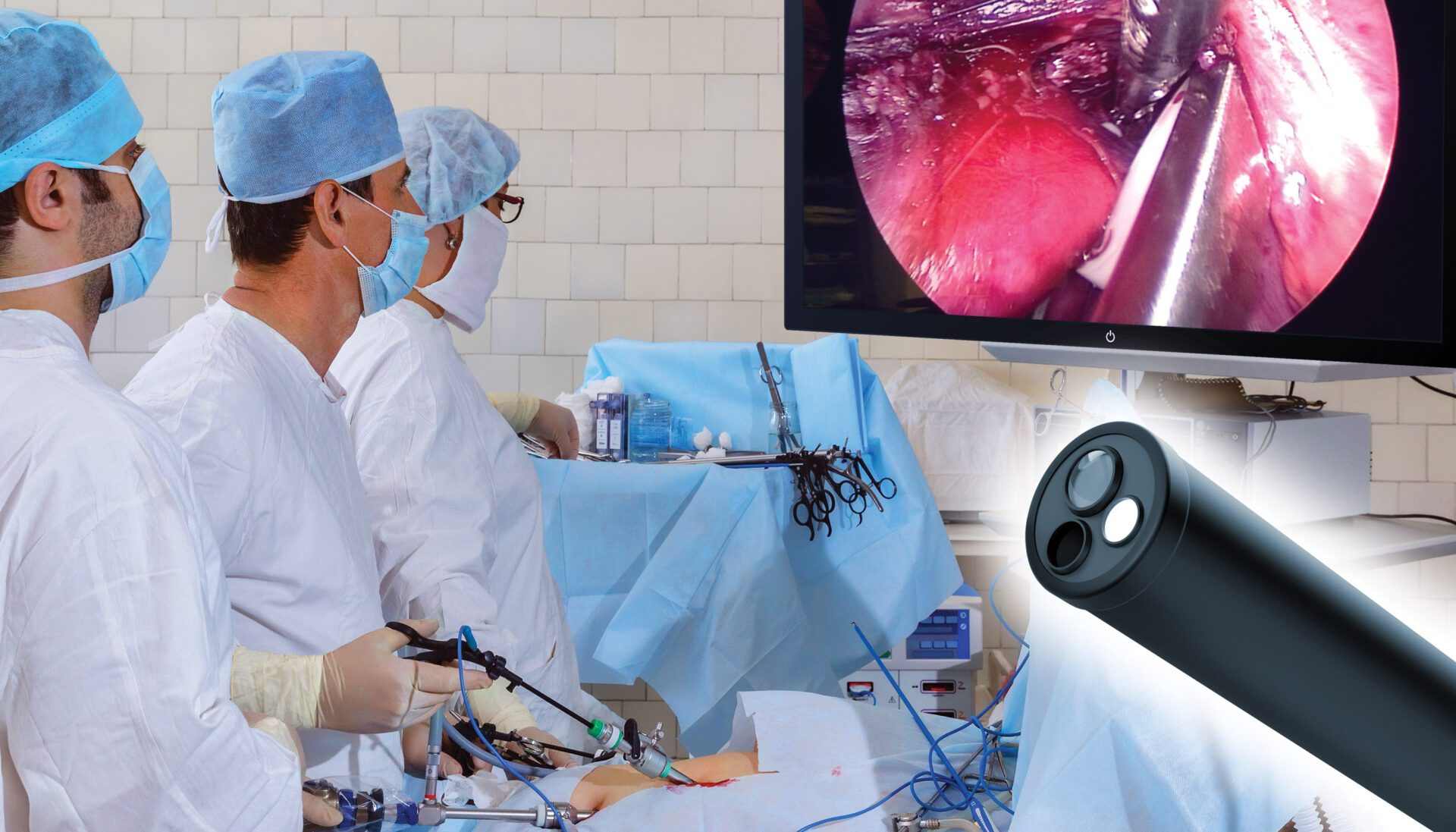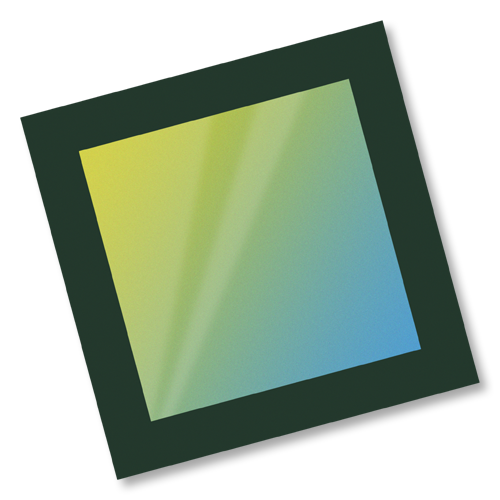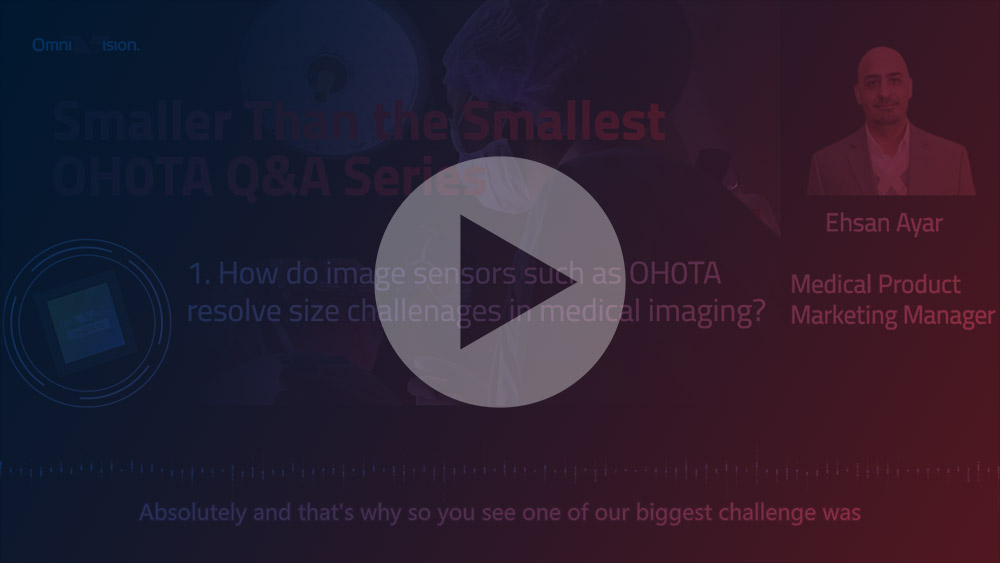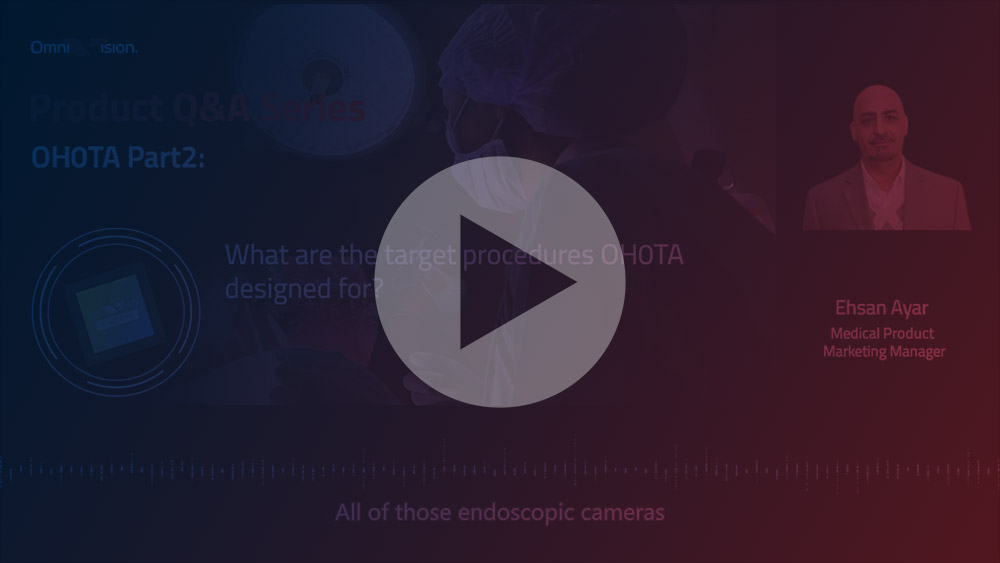

-
SKUOH0TA10-A04A
-
PackageCSP
Medical Image Sensor for Endoscopes and Catheters Improves Image Quality and Reduces Power Consumption
OMNIVISION’s OH0TA is an OVMed® medical grade image sensor with a package size of just 0.55 mm x 0.55 mm, featuring a 1.0‑micron pixel and a 1/31” optical format. The OH0TA takes medical visualization to the next level by quadrupling the RGB image resolution of its predecessor to 400 x 400, or 160 Kpixels, at 30 frames per second, while reducing the power consumption by 20% to 20 mW. This allows designers to add ultra-compact visualization to single-use and reusable endoscopes, as well as catheters and guidewires, with a small outer diameter of 1-2 mm.
The OH0TA’s increased resolution improves the visualization of tissues and other fine details inside the human body, allowing surgeons to see crisper images during procedures such as neuro, ophthalmic, ENT, cardiac, spinal, urology, gynecology and arthroscopy, as well as dental and veterinary diagnosis and surgery. Additionally, the sensor’s lower power consumption reduces “chip on tip” camera heat for greater patient comfort and longer procedure durations, while reducing noise.
To achieve this increase in resolution, along with a smaller pixel size and optical format, the OH0TA is built on OMNIVISION’s PureCel®Plus-S stacked die technology. This next-generation pixel technology also provides higher color fidelity and excellent low light sensitivity of 3600 mV/lux-sec, along with a high signal-to-noise ratio of 37.5 dB for greater image quality. Additionally, PureCel®Plus-S enables the OH0TA’s higher full well capacity (FWC), zero blooming and lower power consumption, resulting in better patient outcomes.
Other key features include a 15.5‑degree chief ray angle, enabling the use of lenses with high fields of view and short focus distances. It also supports a 4-wire interface, as well as raw analog data output, both of which can transmit via cables as long as 4 meters with minimal signal noise. The OH0TA sensor also interfaces with OMNIVISION’s existing OV426 analog-to-digital-conversion bridge chip for backward compatibility and easy adoption. Additionally, it is autoclavable for reusable endoscope sterilization.
Optical size of 1/31″
AntLinx® Analog output
Single 3.3V power supply
On-chip PLL
Serial peripheral interface (SPI)
Exposure and gain control
Pseudo-global shutter (LED mode)
PureCel®Plus-S pixel structure
Improved sensitivity, FWC, zero blooming, low noise, and low power consumption
Enhanced NIR sensitivity
Square aspect ratio
Minimum package size (total 4 pads)
Autoclavable
4 m drive distance
-
SpecOH0TA10
-
Analog / DigitalAnalog
-
Category1MP and Below
-
CFA (Chroma)Color
-
Frame RateFull @ 30 fps
-
Image Area411.264 × 411.264 μm
-
InterfaceAnalog, AntLinx®, SPI
-
Optical Format1/31"
-
Output FormatAnalog
-
PackageCSP
-
Package Dimensions550 x 550 μm
-
Pixel Size1.008 µm
-
Power Requirement25 mW (with IO consumption)
-
Resolution400 x 400
-
Shutter TypeRolling Shutter
-
TechnologyAntLinx®, PureCel®Plus‑S
-
Use CaseBrain / Eyes / Heart / Spine - Angioscope, Brain / Eyes / Heart / Spine - Spinoscope, Dental Mirror, Ear / Nose / Throat and Airway Management - Esophagoscope, Ear / Nose / Throat and Airway Management - Otoscope, Ear / Nose / Throat and Airway Management - Rhinoscope, Musculo-skeletal - Arthroscope, Stomach and Intestine - Proctoscope, Urology and Gynaecology - Choledochoscope, Urology and Gynaecology - Cystoscope, Urology and Gynaecology - Hysteroscope, Urology and Gynaecology - Nephroscope, Urology and Gynaecology - Utero-renoscope

